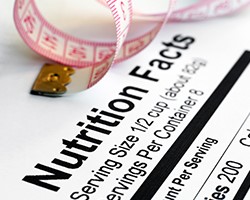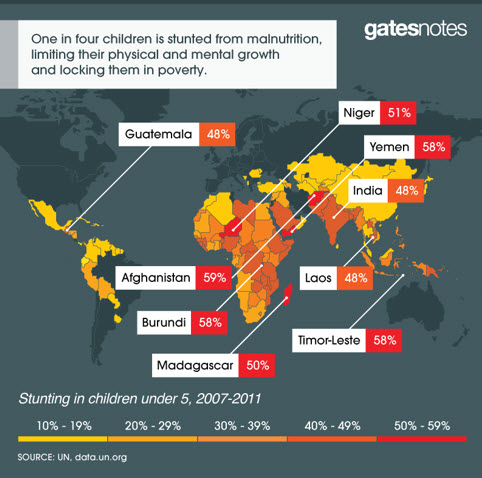-
With Protein, U.S. Dairy Plays to its Strengths
By Tom Suber September 22, 2015- Tweet
Whey’s role as a nutritious ingredient plays well for U.S. dairy exports throughout the global income spectrum.
The global dairy markets are mired in a trough and the worst may not be over. Projections for true market recovery have been pushed well into 2016. What to do in the meantime? As in most parts of life, when things are toughest, we’re playing to our strengths.
 For dairy, our strength is protein—high-quality, versatile and nutritious protein.
For dairy, our strength is protein—high-quality, versatile and nutritious protein.In recent years, U.S. dairy suppliers have channeled more of the whey stream up the ladder toward higher-protein, higher-value products—concentrates and isolates of whey and milk with more than 80 percent protein. Close to 60 percent of the whey stream now goes into high-protein ingredients, up from about 30 percent a decade ago. Production of whey protein isolate (WPI) has doubled since 2008. Production of milk protein concentrate and isolate is up 70 percent in just the last four years.
This trend is reflected in U.S. exports as well. This year, for the first time, the export value of WPI is greater than the export value of dry sweet whey.
The four main drivers of dairy ingredient demand? Nutrition, nutrition, nutrition... in a functional format. Dairy proteins can improve muscle tone, prevent stunting, slow sarcopenia, stimulate muscle synthesis and growth, change body composition and reduce incidence of low birth weight. In short, the nutrition provided by dairy proteins can improve quality of life from cradle to grave.
There are interesting things happening in nutrition research, and the policies that are shaped by that science. Many of these developments center on use of dairy proteins in food aid and other “bottom of the income pyramid” foods. This is invariably behind-the-scenes work that doesn’t make the headlines, but it’s critical to ensuring dairy has a place in the diet for the millions of under-nourished people in Africa and Southeast and South Asia.
For instance, last year, humanitarian and development agency UNICEF pitched CODEX on a global standard for Ready to Use Foods distributed as food aid. The proposed standard, however, didn’t mandate any dairy content. After much debate, the item was tabled until later this year. In the meantime, staff from the U.S. Dairy Export Council (USDEC) met with representatives of UNICEF to educate them on the benefits of dairy proteins in addressing severe malnutrition. Staff is working with UNICEF to resubmit its application, this time with dairy in the formulation.
One of our messages is that newer technologies and a better understanding of amino-acid requirements have led to significantly better ways to measure protein quality.

An expert group from the U.N.’s Food and Agriculture Organization (FAO) recently recommended replacing the current method of measuring protein quality (Protein Digestibility Corrected Amino Acid Score, or PDCAAS) with an improved one (Digestible Indispensable Amino Acid Score, or DIAAS) which, not coincidentally, ranks dairy proteins significantly higher in their bioavailability than vegetable sources. Given the importance of protein quality to malnourished populations, USDEC, working with Global Dairy Platform, National Dairy Council and others, is pushing to get pre-competitive research completed that should accelerate the adoption of DIAAS as the FAO’s standard.
One of the outcomes of malnutrition is stunting—the underdevelopment of children in the precious first 1,000 days from conception, which leads to development problems with lifelong consequences. When it comes to food aid, here, too, dairy protein can be part of the solution. This is another area where the pre-competitive work of USDEC and others is geared to delivering sound evidence on the recommended dose of dairy in therapeutic and supplementary foods to the World Health Organization for policy development.

The science is on our side—though more research needs to be done—but sometimes the cost of incorporating dairy into formulations is an issue.
For instance, aid agencies have, in the past, sought to remove skim milk powder from food aid products to make them less expensive. Here’s where we can find a silver lining in today’s depressed dairy markets.
According to Dairy Australia’s “Dairy Affordability Index,” which takes into account commodity prices and local currency exchange rates, buyers in a number of major import markets, including China and Indonesia, are finding dairy the ‘least expensive’ that it’s been since the Global Financial Crisis (GFC). Significantly, relative to soy protein, dairy protein also is the most affordable since the post-GFC trough of 2009.
Demographers note that the vast majority of global population growth in the decades ahead will come from Africa, Southeast Asia and South Asia. These regions also will be the engines of growth for dairy imports, but not necessarily in foods approaching 100-percent dairy content at $5,000/ton.
In fact, one of the best ways to lift dairy markets off the floor is to tap new consumer segments, such as the ones that will consume dairy but only when it’s affordable. And part of the equation is displacing plant proteins through new nutritional findings that document our superiority and efficacy for vulnerable groups on all continents.
If we can offer more affordable versions of milk-based foods and beverages, backed by research-based evidence, the potential for sustained commercial business remains significant.
Here are related articles from the U.S. Dairy Exporter Blog:
- Research Confirms Benefits of Whey Protein
- Global Boom of 65+ Population Opens Door for U.S. Whey Protein
- Dairy Makes a Case as a Remedy for Malnutrition
Malnutrition diagram courtesy Gates Foundation, 2015
Subscribe to the U.S. Dairy Exporter Blog
The U.S. Dairy Export Council is primarily supported by Dairy Management Inc. through the dairy farmer checkoff that builds on collaborative industry partnerships with processors, trading companies and others to build global demand for U.S. dairy products.
10 Most Recent Posts
Most Popular Posts in Past Year
Index of Posts by Topic
- #GotDairyJobs (4)
- About USDEC (66)
- Africa (6)
- Australia (4)
- Blog (8)
- Brazil (4)
- Canada (20)
- Central America (1)
- Cheese (58)
- Chile (1)
- China (54)
- Common food names (7)
- Company News (20)
- Consistent Supply (1)
- Crisis Management (3)
- Cuba (2)
- Dairy (6)
- Dairy checkoff (9)
- Dairy Ingredients (5)
- Dairy Management Inc. (2)
- Dairy Resources (1)
- Dairy Supply Chain (1)
- Dairy Trends (5)
- Documentation (3)
- EU (24)
- Experts on Dairy Exports (4)
- Exporter of the Year (2)
- Exports (24)
- Farmer leaders (1)
- Farming (38)
- Food Aid (8)
- Food Safety (8)
- Foodservice (3)
- Free trade agreements (34)
- Future trends (1)
- Geographical Indications (GIs) (10)
- Global Marketing (86)
- Global Shipping Crisis (1)
- Got Jobs? (9)
- Indonesia (1)
- Innovation (17)
- Japan (17)
- Krysta Harden (1)
- Market Access (25)
- Market Conditions (268)
- Member Services (17)
- Mexico (41)
- Middle East (9)
- Middle East & North Africa (3)
- Middle East/North Africa (9)
- Milk (4)
- Milk Protein Concentrate (MPC) (2)
- New Zealand (11)
- Next5% (20)
- Nonfat Dry Milk/Skim Milk Powder (8)
- Nutrition (19)
- Product Innovation (6)
- Protein (4)
- Regulations (5)
- Research & Data (326)
- Russia (3)
- Singapore (10)
- South America (8)
- South Korea (10)
- Southeast Asia (25)
- Strategic Insights (1)
- Supply (1)
- Sustainability (26)
- Technology (2)
- ThinkUSADairy (5)
- TPM23 (1)
- TPP (13)
- Traceability (8)
- Trade Barriers (5)
- Trade Data (7)
- Trade Policy (72)
- TTIP (5)
- UHT Milk (7)
- USMCA (2)
- Vietnam (4)
- Whey (6)
- Whey Ingredients (2)
- Whey products (10)
- Whole Milk Powder (WMP) (3)
- World Dairy Expo (1)
- World Milk Day (1)
- Yogurt (1)
Index of Posts by Date, Author
- June 2021 (13)
- March 2015 (12)
- September 2015 (12)
- April 2015 (11)
- December 2015 (11)
- March 2014 (10)
- February 2015 (10)
- October 2015 (10)
- October 2014 (9)
- June 2015 (9)
- July 2015 (9)
- November 2015 (9)
- March 2016 (9)
- October 2019 (9)
- September 2013 (8)
- May 2015 (8)
- August 2015 (8)
- January 2016 (8)
- February 2016 (8)
- March 2017 (8)
- December 2018 (8)
- May 2019 (8)
- December 2019 (8)
- June 2014 (7)
- November 2016 (7)
- May 2017 (7)
- May 2018 (7)
- July 2020 (7)
- June 2023 (7)
- July 2016 (6)
- August 2018 (6)
- October 2018 (6)
- November 2018 (6)
- February 2019 (6)
- June 2019 (6)
- August 2019 (6)
- March 2020 (6)
- April 2020 (6)
- June 2020 (6)
- June 2022 (6)
- February 2014 (5)
- June 2016 (5)
- August 2016 (5)
- September 2016 (5)
- December 2016 (5)
- February 2017 (5)
- July 2017 (5)
- October 2017 (5)
- January 2018 (5)
- April 2018 (5)
- June 2018 (5)
- July 2018 (5)
- September 2018 (5)
- January 2019 (5)
- March 2019 (5)
- April 2019 (5)
- July 2019 (5)
- September 2019 (5)
- November 2019 (5)
- January 2020 (5)
- August 2020 (5)
- October 2020 (5)
- April 2021 (5)
- January 2022 (5)
- May 2013 (4)
- September 2014 (4)
- April 2016 (4)
- May 2016 (4)
- October 2016 (4)
- January 2017 (4)
- April 2017 (4)
- June 2017 (4)
- August 2017 (4)
- September 2017 (4)
- December 2017 (4)
- February 2018 (4)
- February 2020 (4)
- May 2020 (4)
- February 2022 (4)
- September 2022 (4)
- April 2023 (4)
- December 2023 (4)
- November 2017 (3)
- March 2018 (3)
- September 2020 (3)
- December 2020 (3)
- February 2021 (3)
- May 2021 (3)
- August 2021 (3)
- December 2021 (3)
- March 2022 (3)
- April 2022 (3)
- May 2022 (3)
- October 2022 (3)
- December 2022 (3)
- May 2023 (3)
- July 2023 (3)
- November 2023 (3)
- March 2011 (2)
- June 2011 (2)
- September 2011 (2)
- March 2012 (2)
- June 2012 (2)
- July 2012 (2)
- March 2013 (2)
- July 2013 (2)
- November 2020 (2)
- January 2021 (2)
- March 2021 (2)
- July 2021 (2)
- September 2021 (2)
- October 2021 (2)
- November 2021 (2)
- July 2022 (2)
- August 2022 (2)
- January 2023 (2)
- March 2023 (2)
- October 2023 (2)
- January 2024 (2)
- February 2024 (2)
- April 2024 (2)
- June 2024 (2)
- July 2024 (2)
- November 2024 (2)
- December 2024 (2)
- February 2025 (2)
- June 2025 (2)
- July 2025 (2)
- September 2025 (2)
- November 2025 (2)
- December 2025 (2)
- January 2010 (1)
- February 2010 (1)
- March 2010 (1)
- April 2010 (1)
- May 2010 (1)
- June 2010 (1)
- July 2010 (1)
- August 2010 (1)
- September 2010 (1)
- October 2010 (1)
- November 2010 (1)
- December 2010 (1)
- January 2011 (1)
- February 2011 (1)
- April 2011 (1)
- May 2011 (1)
- July 2011 (1)
- August 2011 (1)
- October 2011 (1)
- November 2011 (1)
- December 2011 (1)
- January 2012 (1)
- February 2012 (1)
- April 2012 (1)
- August 2012 (1)
- September 2012 (1)
- October 2012 (1)
- November 2012 (1)
- December 2012 (1)
- January 2013 (1)
- February 2013 (1)
- April 2013 (1)
- June 2013 (1)
- August 2013 (1)
- October 2013 (1)
- November 2013 (1)
- December 2013 (1)
- January 2014 (1)
- April 2014 (1)
- May 2014 (1)
- November 2022 (1)
- February 2023 (1)
- August 2023 (1)
- September 2023 (1)
- March 2024 (1)
- May 2024 (1)
- August 2024 (1)
- September 2024 (1)
- October 2024 (1)
- January 2025 (1)
- March 2025 (1)
- April 2025 (1)
- May 2025 (1)
- August 2025 (1)
- USDEC (183)
- USDEC Staff (164)
- Alan Levitt (119)
- Tom Suber (41)
- Margaret Speich (22)
- Marc A.H. Beck (15)
- Vikki Nicholson-West (11)
- Angélique Hollister (11)
- Tom Vilsack (8)
- Jaime Castaneda (7)
- Matt McKnight (7)
- Véronique Lagrange (7)
- Margaret Speich and Mark O'Keefe (7)
- Ross Christieson (7)
- Paul Rogers (6)
- Shawna Morris (5)
- William Loux (5)
- Alan Levitt and Marc Beck (5)
- Krysta Harden (4)
- USDEC Communications (3)
- Kristi Saitama (3)
- Marilyn Hershey (3)
- Brad Gehrke (3)
- Tom Quaife (2)
- Nick Gardner (2)
- Jim Mulhern (2)
- Alan Levitt and William Loux (2)
- Kara McDonald (2)
- Luke Waring (2)
- Merle McNeil (2)
- Andrei Mikhalevsky (1)
- Rodrigo Fernandez (1)
- Dermot Carey (1)
- Jeremy Travis (1)
- Annie Bienvenue (1)
- Ross Christieson and Shawna Morris (1)
- Becky Nyman (1)
- Paul Rogers and Tom Quaife (1)
- Rick Ortman (1)
- Tony Rice (1)
- Barbara O’Brien (1)
- Paul Rogers and Mark O'Keefe (1)
- Dalilah Ghazalay (1)
- Amy Wagner (1)
- Mitchell Bowling (1)
- Erica Louder (1)
- Brad Scott (1)
- Amy Foor (1)
- Scott Lantz (1)
- Sandra Benson (1)
- Errico Auricchio (1)
- Jaclyn Krymowski (1)
- Krysta Harden, USDEC President and CEO (1)
.png)

